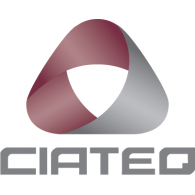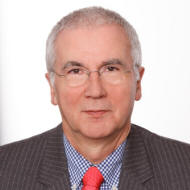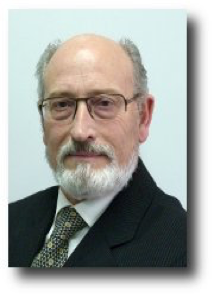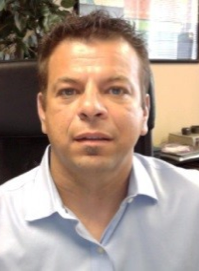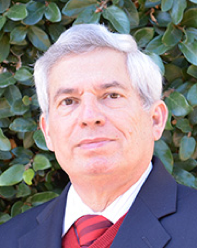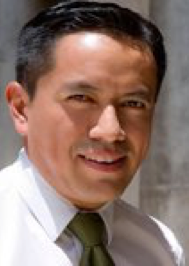- Detalles
- Escrito por Super User
- Categoría: sin categoría
- Visto: 5463
General Info
Location:
The ICSE-Q will be held in the Misión Juriquilla Hotel in Querétaro, México from June 22nd to 24th 2016. Widely recognized personalities in the surface engineering inclduing thermal and cold gas spray deposition as well as high vacuum (PVD and CVD) fields have been invited to present keynote talks. Additionally, poster sessions are organized to incentivize discussion groups in topics related to surface engineering.
Accomodation
Hotel Mision Juriquilla Queretaro offers first class accommodation in a renovated eighteenth century farmhouse, at the north of the city of Queretaro, surrounded by gardens and buildings that evoke the colonial Mexico. An ideal scenario for huge conventions, business groups, weddings and guests who enjoy a refined, always with the tradition of hospitality for Hoteles Mision.
It has 192 standard rooms and 4 suites, with services and amenities of first class. Also offers 13 rooms with capacity from 10 up to 2000 people with services to perform the wedding of your dreams, special events, parties and business meetings, more info here http://www.hotelesmision.com.mx/e_queretaro_juriquilla.php
About Queretaro
Divided into 18 municipalities, Querétaro combines interesting history with the magnificence of nature, the joy of good life with the adrenaline of extreme sports. It has two zones that have been declared a World Heritage by UNESCO: zone of monuments of historical center of Santiago de Querétaro and the five Franciscan Missions of Sierra Gorda, which were universal apotheosis of Baroque art.
The mountainous region has been declared a Biosphere Reserve due to biodiversity and different ecosystems. Also there are beautiful villages like Tequisquiapan and Bernal, surrounded by vineyards and dairies. Queretaro is a privileged area due to its excellent location, modern infrastructure and connectivity, quality of life and diversity in touristic destinations fusing centuries of history, art and culture, in addition to extraordinary natural beauty.
In the central valleys including Santiago de Querétaro, San Juan del Río and sorroundings) the weather is mild and quite pleasant most of the year, the temperature ranges between 15 º and 28 º C on June.
(http://queretaro.travel)
Contact information
Please feel free to contact us for any further questions or comments at Esta dirección de correo electrónico está siendo protegida contra los robots de spam. Necesita tener JavaScript habilitado para poder verlo.
+52 442 2119924
+52 442 2119900 X1559.
- Detalles
- Escrito por Super User
- Categoría: sin categoría
- Visto: 2631
General Info
Location:
Sistema de reservas de Equipos de CENAPROT
Para hacer uso de cualquiera de los equipos que integran el CENAPROT, es necesario contar con la autorización del Responsable Técnico de CENAPROT y posteriormente realizar un registro en línea.
Contactar al responsable del CENAPROT para mayor información.
Dr. Juan Muñoz
(442) 2119924
Consideraciones y requisitos que se deben tener antes de solicitar una reserva:
Capacitación
Se debe contar con la capacitación sobre el uso y manejo del equipo (formato RG/CE-LI/009/2014). Este formato se puede descargar ingresando el usuario y contraseña, en el módulo Archivos/Calidad Documental/Formatos.
En caso de no contar con la capacitación, solicitarla al asesor o responsable del laboratorio y emplear el formato citado.
Manual del equipo
Adicional a la capacitación, el usuario tiene la responsabilidad de estudiar el manual del equipo y tenerlo disponible durante la operación del equipo. Los manuales se pueden descargar ingresando el usuario y contraseña, en Módulos disponibles/Archivos/Manuales de equipos.
Equipo de protección personal
Es necesario tener el equipo de protección personal adecuado de acuerdo a las recomendaciones del fabricante (manual) y asesor (formato CE-F-CA-008-2015). De no contar con el equipo de protección adecuado, este debe ser solicitado a través del formato citado. Este formato se puede descargar ingresando el usuario y contraseña, en el módulo Archivos/Calidad Documental/Formatos.
De no cumplir los requisitos o detectarse mal uso podría restringirse el uso de los equipos.
*********
Medidas de Seguridad en la sede principal de CENAPROT
Manual de seguridad y bioseguridad de CENAPROT
Conocer el Manual de Seguridad y Bioseguridad es un requisito obligatorio para hacer uso de las instalaciones o cualquiera de los equipos que se encuentran en CENAPROT.
Accesos controlados
El acceso a los diferentes laboratorios que conforman la sede del CENAPROT en Cinvestav Querétaro, será restringido, a fin de establecer controles de seguridad que permitan evitar y reducir riesgos a la seguridad de los usuarios.
El acceso será otorgado únicamente al personal que ha cumplido con las capacitaciones mínimas necesarias para la correcta operación de los equipos (formato RG/CE-LI/009/2014).
Con estas medidas se busca prevenir la ocurrencia de lesiones personales, daño al equipo e infraestructura.
Monitoreo
Siendo que los procesos de proyección térmica involucran diversos puntos de riesgo, se implementó un sistema de monitoreo de las actividades, operaciones y personal dentro de los laboratorios y en la periferia de las instalaciones donde se considera que pueda existir cualquier tipo de riesgo a la seguridad personal, de las instalaciones e infraestructura.
- Detalles
- Escrito por Super User
- Categoría: sin categoría
- Visto: 2264
Medidas de seguridad en la sede principal de CENAPROT
Manual de seguridad y bioseguridad de CENAPROT.
Conocer el Manual de Seguridad y Bioseguridad es un requisito obligatorio para el uso de las instalaciones o cualquiera de los equipos que se encuentran en CENAPROT.
Accesos controlados
Acceso a los diferentes laboratorios que conforman la sede del CENAPROT en Cinvestav Querétaro, será restringido, un fin de establecer los controles de seguridad para evitar y reducir los riesgos a la seguridad de los usuarios.
El acceso RG / CE-LI / 009/2014 (formato RG / CE-LI / 009/2014 ).
Con estas medidas se busca prevenir la ocurrencia de lesiones personales, daños al equipo e infraestructura.
Monitoreo
Siendo que los procesos de proyección térmica involucran diversos puntos de riesgo, se implementa un sistema de monitoreo de las actividades, operaciones y personal dentro de los laboratorios y en la periferia de las instalaciones donde se considera que puede existir un tipo de riesgo a la seguridad Personal, de las instalaciones e infraestructura.
Sistema de reservas de equipos de CENAPROT
Para poder utilizar cualquiera de los equipos que integran el CENAPROT, es necesario contar con la autorización del Responsable Técnico de CENAPROT y luego realizar un registro en línea.
Contactar con el responsable del CENAPROT para mayor información.
Dr. Juan Muñoz
(442) 2119924
Consideraciones y requisitos que deben tenerse antes de solicitar una reserva:
Capacitacion
Se debe contar con la capacitación sobre el uso y manejo del equipo (formato RG / CE-LI / 009/2014 ). Este formato se puede descargar ingresando el usuario y la contraseña, en el módulo Archivos / Calidad Documental / Formatos.
En el caso de no contar con la capacitación, solicitar el asesoramiento técnico.
Manual del equipo
Adicional a la capacitación, el usuario tiene la responsabilidad de estudiar el manual del equipo y tenerlo disponible durante la operación del equipo. Los manuales se pueden descargar ingresando el usuario y la contraseña, en Módulos disponibles / Archivos / Manuales de equipos.
Equipo de protección personal
Es necesario tener el equipo de protección personal adecuado de acuerdo a las recomendaciones del fabricante (manual) y asesor (formato CE-F-CA-008-2015). De acuerdo con el equipo de protección adecuado, este debe ser solicitado a través del formato citado. Este formato se puede descargar ingresando el usuario y la contraseña, en el módulo Archivos / Calidad Documental / Formatos.
De no cumplir con los requisitos o detectar mal uso podría restringir el uso de los equipos.
- Detalles
- Escrito por Super User
- Categoría: sin categoría
- Visto: 2790
CALL FOR PAPERS
abstract submission to the ICSE-Q 2016 can be done directly to our system, using the username and password provided in the Registration section
- Detalles
- Escrito por Super User
- Categoría: sin categoría
- Visto: 3814
Invited Speakers |
|
|
|
|
Helene Ageorges, PhD. Researcher of the University of Limoges, Institute of Processing and applications of materials, France.
Specialist researcher in coating fabrication and simulation processes as atmospheric plasma spray (APS), arc plasma spray, suspension plasma spray (SPS), DC plasma spray, Gas and Water Stabilized Plasma Spray (GSP and WSP PS) among others. Also, Dra. Ageorges, has made important contributions on the synthesis studies of feedstock powder for thermal spray coatings among metallic, ceramics, bioglasses and composites ones for biomedical, automotive and energy industries. As well in tribological, mechanical and chemical properties characterization of feedstock powder and thermal spray coatings. |
|
|
|
Wolfgang Diehl, PhD. Deputy Director of the Fraunhofer Institute for Surface Engineering and Thin Films, Braunschweig, Germany. |
|
|
|
Joseph M. Guilemany, PhD. Director of Center of thermal projection, CPT Barcelona University, Spain.
Full professor at the University of Barçelona at the Department of Material Science. Metallurgical Engineering, and director of the Thermal Spray Centre. Guilemany challenges Europe to stand up and to explore and exploit all the possibilities coming with the new nanotechnologies and nanomaterials using thermal spray techologies , in order to create a more attractive future, particularly for young people. |
|
|
|
Dr. Andy Korenyi-Both |
|
|
|
Carlos G. Levi, PhD. Professor of materials and mechanical engineering at the University of California, Santa Barbara. He holds a PhD degree from the University of Illinois at Urbana-Champaign (1981).His research focuses on the fundamental understanding of microstructure evolution in ceramics and metals and its application to the conceptual design of improved structural and functional materials. His research interests lie on high temperature coatings for advanced energy systems, including the effects of CMAS on TBCs and EBCs. Levi is a Fellow of the American Ceramic Society. |
|
|
|
Christopher Muratore, PhD.
Professor at the Department of Chemical and Materials Engineering, University of Dayton, USA. Christopher Muratore received his Ph.D. in Materials Science and Engineering from the Colorado School of Mines in 2002. Upon completion of his degree, he was a Postdoctoral Research Fellow in the Plasma Physics Division at the Naval Research Laboratory. He joined the Air Force Research Laboratory (AFRL) in 2004, where his research was focused on development of smart thin film nanocomposite materials demonstrating temperature-adaptive properties and integrated health monitoring, in addition to the role of surfaces and interfaces on heat transfer. He joined the University of Dayton Chemical and Materials Engineering Department in December 2012. He is currently engaged in development of novel approaches for large scale synthesis of layered atomic structures for both flexible electronic device and solid lubrication. |
|
|
|
Ing. Reiner Waller He is an expert on arc-PVD technology, ceramic and metallic coating(s) design, surface engineering and improvement of cutting, forming and machining tools. He is currently working as a specialized manager at OERLIKON balzers Germany. |
|
|
|
Sanjay Sampath, PhD. Director of the Center for Thermal Spray, Stony Brook, USA He received his PhD degree from Stony Brook in 1989. His research interests lie in thermal-spray processing, multifunctional coatings, and direct write technologies. Sampath is a Fellow of ASM International and the American Ceramic Society. He has received numerous best paper awards from the Thermal Spray Society, was a recipient of the R&D 100 Award, and recently elevated to the rank of distinguished professor of the State University of New York system. He has approximately 150 articles and 15 patents to his credit. |
|
|
|
Uwe Schulz, PhD. Head of the department for multifunction and high temperature coatings, Institute of Materials Research, German Aerospace Center, Germany Head of the High Temperature and Functional Coatings department at the German Aerospace Center’s (DLR) Institute of Materials Research in Cologne, Germany. He studied materials science at the Technical University Mining Academy Freiberg, where he received his PhD degree in 1995. In 1991, he joined DLR to perform research on the development, manufacture, characterization, and testing of EBPVD thermal-barrier coating systems for turbine applications. Schulz is in charge of various in-house, national, and European projects, funded by industry and government. His research interests lie on thermal barrier coatings and protective coatings for aerospace applications deposited by PVD methods. He holds 6 patents and is the author of 50 papers and co-author of more than 70 additional papers. |
|
|
|
Alfredo Valarezo, PhD. Director of IMETCA and Professor of Universidad San Francisco de Quito, Ecuador. Director of the mechanical engineering department and affiliated professor of the Mechanical and Chemical engineering in the San Francisco de Quito University, promotes ASME student section and SAE-formula USFQ group. He is the coordinator of the alternative energies laboratory. Currently, he is a researcher and professor in the manufacturing process and material science areas. He specializes in high-temperature protective coatings, wear and corrosion, especially using thermal spray techniques (plating), Electroplating, and diffusion. Working intensively on technology transfer activities between academia and industry. Also performs experimental work and modeling research in collaboration with thermal spray groups in USA, Finland, Sweden, etc. |
|
|
|
Robert Vaßen, PhD. Director and Head of Materials for power plant technology department, Jülich Research Centre, Germany. Professor of Mechanical Engineering at the RuhrUniversity Bochum in Germany and employed at Forschungszentrum Jülich GmbH, where he researches energy systems. He is also a guest professor at University West, Trollhattan, Sweden. Professor Vaßen’s research fields include thermal spray technology, protective high-temperature coatings, powder technology, ceramics processing, lifetime modelling, and solid oxide fuel cells and membranes. His projects include several European projects on TBCs (SAMBA) and membranes (DEMOYS), DFG-projects on Bondcoats, TBCs and stresses in thermal spray coatings, federal government funded project on new TBCs, abradables and repair, and industrial projects on coating development and testing. Robert Vaßen is author and co-author of more than 160 papers and holds more than 10 patents. He is active in different committees of the German and American ceramic society. |
|
|
|
Andrey Veovodin, PhD. Chair Professor at the Department of Materials Science and Engineering, University of North Texas, USA. Andrey studied Metallurgy and received his PhD in Material Science at the Tula Technical University in Russia. He started his carrier as assistant professor at the same university and gain working and managing experience at the Tribology and Coatings Branch at the Air Force Research Laboratory. Currently, he holds a chair and professor position at the Department of Materials Science and Engineering, College of Engineering, University of North Texas and working as adjunct professor at the Department of Chemical and Materials Engineering, University of Dayton and at the Birck Nanotecnology Center, Purdue University. His main research focus is related to tribology of coatings under extreme conditions. |
|
|
|
|
|


